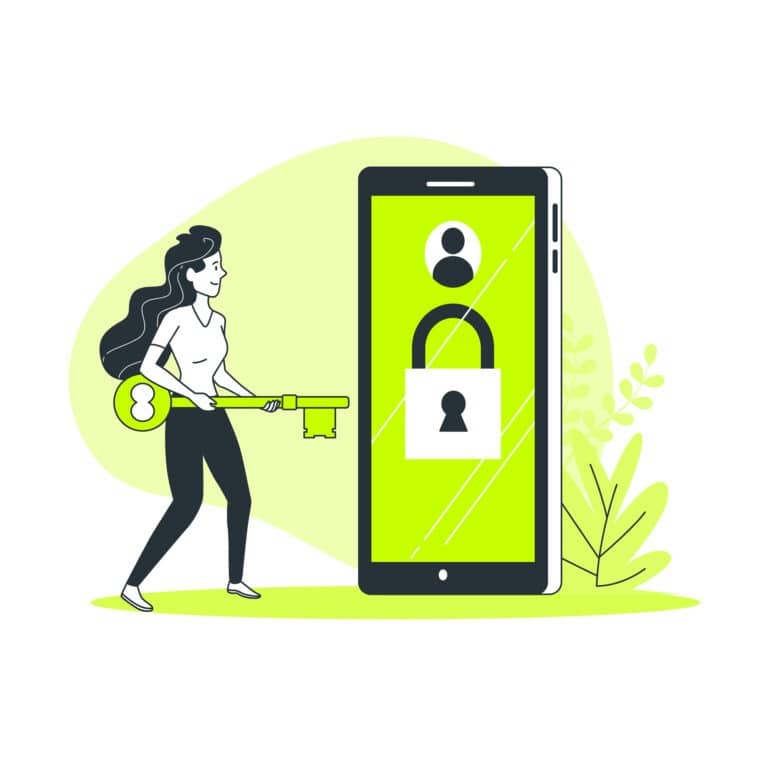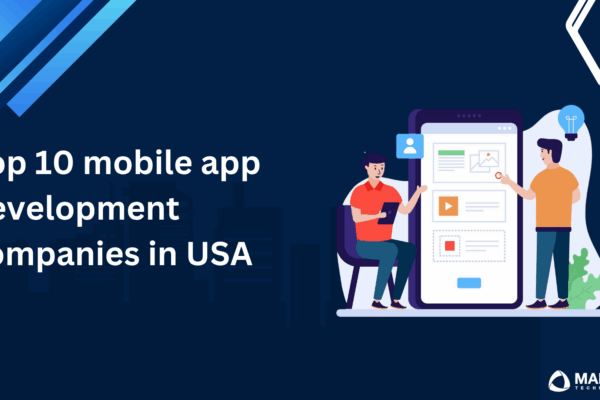In today’s hyper-connected digital landscape, maintaining your iOS application securely is not just a matter of choice – it’s an absolute imperative. As the digital realm continues to expand and evolve, so do the risks and threats that can jeopardise the integrity of your app and the sensitive data it holds. Whether you’re a startup looking to make your mark or an established player in the market, the importance of robust and vigilant security cannot be overstated. It’s the key to safeguarding your reputation, user trust, and, ultimately, the very future of your iOS application.
With over a decade of experience in crafting bespoke software solutions, our team at Mallow has witnessed firsthand the evolving landscape of digital security threats. We’ve successfully navigated the intricate terrain of application development, considering our client’s diverse needs and the paramount importance of data protection. When developing applications, we consider vulnerabilities, necessary security measures, and how to stay ahead of emerging threats.
After reading this article, you will learn about the evolving threat landscape and the specific risks associated with inadequately protected applications. The article will shed light on the potential consequences of neglecting security, from financial losses to reputational damage, and will empower you with knowledge on how to fortify your digital assets proactively.
What are the benefits of maintaining your application security?
Ensuring the secure maintenance of your iOS application is not just a technological concern; it is a strategic business imperative. There are several crucial benefits that a robust security framework can bring to your business.
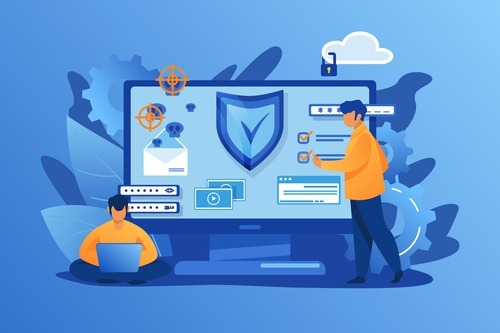
1. Safeguarding your user data
Protecting user data is paramount in today’s digital landscape. For businesses, it goes beyond trust; it’s about compliance, brand integrity, and competitive differentiation. When you safeguard user data, you’re building a fortress of trust, encouraging customer loyalty, and fostering a community of repeat users. More than that, it ensures compliance with stringent data protection regulations, saving your business from the potential financial and legal repercussions of data breaches. Your application’s reputation as a safe haven for user information can set it apart in a crowded marketplace, attracting customers who prioritise data security.
Here are some of the best practices recommended by Apple for ensuring the security of user data:
- Request access only when your app needs the data – Ensure that your app requests access to user data only when necessary for the app’s functionality. Avoid unnecessary data collection to protect user privacy.
- Be transparent about how data will be used – Clearly communicate to users how their data will be used within your app. Provide a privacy policy that explains the purposes of data collection and how it will be handled.
- Give the user control over data and protect the data you collect – Empower users to have control over their data. Offer options to review, edit, or delete their data. Implement robust security measures to protect the data you collect from unauthorised access and breaches.
- Use the minimum amount of data required – Collect the minimum amount of user data necessary to fulfil your app’s intended functionality. Avoid gathering excessive or irrelevant information that could compromise user privacy.
2. Preventing unauthorised access
Securing your iOS application is not just about keeping external threats at bay; it’s about safeguarding your internal resources and intellectual property as well. Preventing unauthorized access isn’t limited to external hackers—it also mitigates insider threats, which are a leading breach vector. A 2024 empirical study of mobile health apps found that a substantial number of breaches stemmed from improper permissions and weak internal access controls. In the business world, security-conscious clients and partners appreciate such a commitment to safeguarding confidential information. It becomes a significant selling point and can open doors to lucrative opportunities.
3. Preserving intellectual property
In a competitive business environment, intellectual property (IP) is often a company’s most valuable asset. Your iOS application might contain innovative ideas, unique code, or distinctive functionalities that set you apart from competitors. By maintaining robust security, you ensure that these vital IP assets remain under lock and key. This protection preserves your competitive advantage and reduces the risk of IP theft. It not only safeguards your business’s innovation but also sets the stage for potential collaborations and licensing agreements. A commitment to IP protection can also attract investors and stakeholders who recognise the importance of safeguarding a company’s creative assets.
4. Staying ahead of evolving threats
As cyber‑threats constantly evolve, so do their financial stakes. For example, the 2024 IBM Cost of a Data Breach Report revealed a 10 % increase in global breach costs, with an average impact of USD 4.88 million per incident. Embedding proactive security into your iOS app isn’t just prudent it’s essential to safeguard business continuity and prevent escalating financial fallout. This proactive approach minimises the need for costly, reactive security measures that often follow attacks. By preventing security breaches, you avoid the downtime and revenue loss that typically accompany them. This maintains operational efficiency and demonstrates a commitment to security that can boost customer trust.
5. Ensuring business continuity
For businesses, maintaining secure applications is a linchpin for business continuity. Preventing downtime and revenue loss due to security incidents is essential. Secure applications guarantee a consistent user experience, enhancing customer satisfaction and trust. Your business can operate without interruptions, delivering on promises to clients and partners. This resilience is key to preserving the long-term viability of your application and, by extension, your business.
6. Preventing financial loss
Security breaches come with a hefty price tag, including legal expenses, fines, and the cost of restitution. Beyond these direct costs, businesses face the potential for revenue loss due to reputational damage or customer churn. By maintaining robust security, you reduce these financial risks. Your business can continue to operate profitably, ensuring a healthy return on investment. With security, you can redirect resources toward growth and innovation rather than recovery, promoting long-term financial stability.
7. Maintaining application reputation and enhancing user trust
Your application’s reputation is closely tied to its security. A secure application is seen as reliable, trustworthy, and user-friendly. Maintaining your app’s reputation isn’t just about aesthetics; it’s about fostering trust, loyalty, and a strong user community. Security-conscious users are more likely to engage with and remain loyal to your app. Their positive experiences translate into word-of-mouth marketing, referrals, and long-term user relationships vital to your app’s success.
Below mentioned are some of the ways that will give you an overview of some of the safety recommendations provided by Apple:
- Take note of objectionable content – It is essential to actively monitor and identify objectionable content within your application. Implement filters and reporting mechanisms to detect and address any content that violates your platform’s guidelines or community standards.
- Watch for user-generated content – Pay attention to the content created by your platform’s creators. Encourage responsible content creation and provide tools for users to report any concerns about inappropriate or harmful content produced by creators. Enforce guidelines and policies to ensure that content aligns with your platform’s values and does not promote harm or harassment.
- Provide developer information – Make sure your users have access to information about the developers of your application. Transparency in this regard can build trust and provide users with a point of contact for inquiries or concerns.
- Data security – Prioritise data security to protect user information. Implement encryption secure storage practices, and regular security audits to safeguard user data from breaches and unauthorised access.
- Reporting criminal activity – Establish clear procedures for users to report criminal or abusive activities within your application. This helps ensure a safer and more responsible user environment, and the appropriate authorities can be notified when necessary.
8. Avoiding legal issues
Businesses operating with inadequate security measures often encounter legal issues. Data breaches and non-compliance with regulations can lead to litigation, resulting in costly legal expenses and financial burdens. By maintaining security, you mitigate these legal risks, ensuring that your business operates within the boundaries of the law. This protects your business’s reputation and credibility in the market, helping you to avoid costly legal battles and the associated reputational damage. Secure application maintenance safeguards your business and ensures your operations remain legally sound.
What are some of the key factors that determine your iOS application’s security?
The security of your iOS application is influenced by a myriad of essential factors that collectively form a robust defence against potential threats. Understanding these key components is crucial for maintaining a secure digital environment for your users and protecting your business’s reputation.
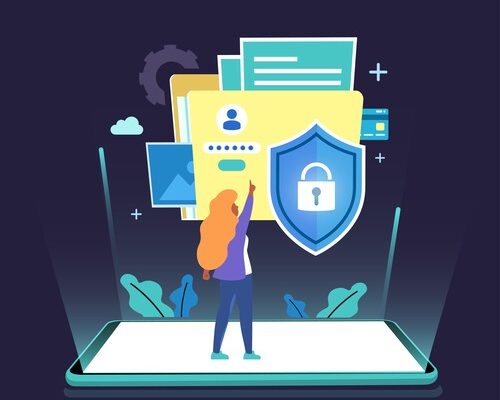
Here’s a more in-depth look at the factors that determine the security of your iOS application:
1. Authentication and authorisation
Authentication and authorisation are the twin pillars upon which secure access to your iOS application is built. Authentication verifies the identity of users, confirming they are who they claim to be. Authorisation, on the other hand, controls what resources and actions authenticated users can access or perform within the app. Together, these processes ensure that only authorised individuals can interact with your application and its data. Strong authentication and granular authorisation are vital to safeguarding user information and maintaining the integrity of your app.
2. Data encryption
Data encryption is the armour that shields your application’s sensitive data from prying eyes. It involves encoding data in a way that only authorised parties with the encryption keys can decipher it. Encryption is particularly crucial for protecting user credentials, payment information, and any other sensitive data your app handles. Robust encryption protocols, like SSL/TLS, ensure that data remains confidential during transmission and while stored on the device, safeguarding it from interception and theft.
3. Secure code development
The foundation of a secure iOS application begins with the development process itself. Secure code development practices prioritise security considerations from the initial stages of coding, helping eliminate vulnerabilities and reducing the likelihood of exploitation by malicious actors. By adhering to coding best practices, employing secure libraries, and conducting regular code reviews, you can minimise the risk of security flaws in your application’s architecture and logic. Secure code development is an integral part of building an application that can withstand the ever-evolving threat landscape.
4. Regular security testing
Maintaining a secure iOS application requires continuous security testing. Regular assessments, including vulnerability scans and penetration tests, help identify and mitigate potential weaknesses and vulnerabilities in your app’s defences. By proactively uncovering and addressing security issues, you can prevent them from being exploited by malicious entities. This ongoing commitment to security testing ensures that your application remains resilient in the face of emerging threats and provides a layer of protection that is essential for the safety of your users and the trustworthiness of your app.
5. API security
For many iOS applications, Application Programming Interfaces (APIs) are the conduits through which they communicate with external services and data sources. Ensuring the security of these interfaces is paramount to protect your app from unauthorised access and data leaks. API security measures encompass authentication, authorisation, and encryption to safeguard the confidentiality and integrity of data exchanged between your app and external sources. This is crucial for maintaining the overall security posture of your iOS application and preventing data breaches that could undermine user trust and your business’s reputation.
6. Data validation
Data validation is a foundational aspect of security that safeguards your iOS application against common vulnerabilities. It involves checking user inputs to ensure they are of the expected type and within appropriate limits. Proper data validation mitigates risks associated with input-based attacks, such as SQL injection and cross-site scripting. By implementing effective data validation processes, you prevent malicious input from compromising the security and functionality of your app. It also contributes to a positive user experience by ensuring that the data entered is accurate and in line with your application’s requirements, minimising user frustration and potential vulnerabilities.
7. Error handling
Effective error handling is not only about user experience but also security. Inadequate error handling can inadvertently expose sensitive information about your application’s structure and potential vulnerabilities. Secure error handling conceals this information while providing users with informative, non-sensitive feedback when issues arise. Proper error handling enhances the overall security posture of your iOS application by preventing attackers from exploiting error messages to gain insights into the app’s internal workings or weaknesses. It’s a critical component of maintaining a secure and user-friendly application that instills confidence in your user base.
8. Session management
Session management is central to tracking and securing user interactions within your iOS application. Effective session management ensures that user sessions are protected against unauthorised access and session hijacking attempts. It is instrumental in maintaining the confidentiality and integrity of user interactions and data while they are engaged with your app. A robust session management system is essential for safeguarding sensitive information, preventing unauthorised account access, and ensuring that user sessions are not vulnerable to security threats. Properly implemented session management is a cornerstone of a secure application that can be trusted by your users.
9. Compliance with App Store guidelines
Compliance with industry standards and adherence to App Store guidelines are integral components of a comprehensive security strategy. Non-compliance can lead to rejection or removal from the App Store, potentially harming your business. Furthermore, industry-specific regulations may require specific security measures to protect user data and privacy. Complying with these standards and guidelines not only ensures that your app remains available to users but also underscores your commitment to maintaining a secure and trustworthy digital environment. It’s an essential part of the overarching security framework that governs your iOS application’s development and deployment.
Here’s your go-to checklist for maintaining your application’s security
By now, you should have a comprehensive understanding of the importance of maintaining the security of your iOS application for your business. You’re likely aware of the numerous benefits that come with a securely maintained iOS application. Your next step would be to plan how to efficiently enhance the security of your iOS application while ensuring that no crucial tasks are overlooked.
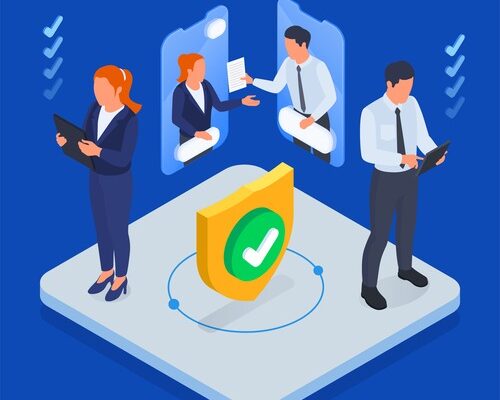
To assist you in this process, here’s a handy checklist to get you started:
✅ Follow best practices for secure coding, such as avoiding hardcoding sensitive information and using parameterised queries to prevent SQL injection.
✅ Keep your app and all its libraries and dependencies up to date to patch known vulnerabilities.
✅ Encrypt sensitive data both at rest and in transit using industry-standard encryption protocols.
✅ Implement secure authentication methods, such as OAuth or OpenID, and ensure strong password policies.
✅ Enforce access controls to ensure that users can only access the data and functionality they are authorised to use.
✅ Validate user inputs and sanitise data to prevent injection attacks, like cross-site scripting (XSS) and Cross-Site Request Forgery (CSRF).
✅ Protect files and data stored on the device using the iOS Keychain, Data Protection API, or other secure storage mechanisms.
✅ Use HTTPS for all data transmission and validate SSL certificates to prevent man-in-the-middle attacks.
✅ Comply with privacy regulations (e.g., GDPR) and obtain user consent for data collection, sharing, and tracking.
✅ Conduct regular penetration testing to identify vulnerabilities and address them proactively.
✅ Ensure the security of your backend systems and APIs to prevent data breaches and unauthorised access. If your app uses in-app purchases, ensure that the transaction process is secure and resistant to fraud.
✅ Have a plan in place for responding to security incidents, including breach notifications.
Securing your application goes beyond the frontend; backend security is equally crucial. Having a clear understanding of the key areas requiring attention in iOS app security, the focus should now extend to eliminating potential vulnerabilities in the backend.
If your application’s backend is developed using Ruby on Rails or Laravel, explore this article on securing Ruby on Rails applications or assessing the security of Laravel applications for valuable insights. If uncertainties persist, don’t hesitate to reach out to our team for assistance.Still unsure about your next step? Feel free to reach out to our team.
Your queries, our answers
Mobile application development involves creating software applications designed to run on mobile devices like smartphones and tablets. These apps can be native (built specifically for iOS or Android), cross-platform (designed to work on multiple platforms), or hybrid (combining elements of both).
Our mobile app development process includes the following stages: requirement gathering and analysis, design and prototyping, development and coding, testing and quality assurance, deployment, and post-launch support. Each stage is crucial to delivering a high-quality application.
To gain deeper insights into the experience of working on a mobile project with Mallow, explore more details here.
The choice between native and cross-platform development depends on your project’s goals, budget, and target audience. Native apps offer better performance and a more tailored user experience, while cross-platform apps allow for faster development and lower costs by using a single codebase for multiple platforms. For a detailed comparison of Native vs. Hybrid development, explore our comprehensive analysis to help you make an informed choice.
Mallow develops mobile apps for iOS, Android, and cross-platform solutions. We use the latest technologies and frameworks to ensure your app performs optimally on the platforms that matter most to your users.
Choosing the right features for your mobile app depends on understanding your target audience, business goals, and budget. We work closely with you to prioritize features that will provide the most value to your users and align with your business objectives.
At Mallow, we offer ongoing app maintenance and updates as part of our post-launch services. This includes regular updates to improve performance, add new features, and ensure compatibility with the latest operating systems. For more details, get in touch with our team.
Yes, Mallow assists with the entire app store submission process, including meeting the guidelines for Apple’s App Store and Google Play. We ensure your app is ready for submission and provide support to help it get approved.
Mallow uses a variety of technologies and frameworks for mobile app development, including Swift and Objective-C for iOS, Kotlin and Java for Android, and React Native and Flutter for cross-platform development. Our technology choices are driven by the specific needs of your project.
Our testing process includes functional testing, performance testing, security testing, usability testing, and compatibility testing across different devices and operating systems. We ensure your app is bug-free and performs optimally before it goes live.
The cost of developing a mobile app depends on several factors, including the app’s complexity, features, platform (iOS, Android, or both), and the development team’s expertise. Costs can range from $10,000 to $150,000 or more. To know more, check out how much it costs to work on a mobile project with us.
The development timeline for a mobile app varies depending on the complexity of the project. A basic app may take 2-4 months to develop, while a more complex app with advanced features can take 6-12 months or longer.
Choosing the right features for your mobile app depends on understanding your target audience, business goals, and budget. We work closely with you to prioritize features that will provide the most value to your users and align with your business objectives.
Yes, Mallow offers comprehensive post-launch support, including monitoring, updates, bug fixes, and enhancements. We ensure your app remains up-to-date and continues to perform well after it’s launched.
A mobile app can enhance customer engagement, increase brand visibility, provide better service through personalized experiences, and create new revenue streams. It also allows you to reach a broader audience by making your services more accessible on mobile devices.
Getting started with Mallow is easy! Simply reach out to us to discuss your project. We’ll work with you to understand your goals, define your requirements, and create a development plan that meets your needs. Let’s bring your mobile app idea to life!.
Security is a top priority at Mallow. We implement advanced security measures, including encryption, secure authentication, and regular security audits, to protect your app from potential threats and ensure data integrity.
To learn more about how we handle and implement these security measures, check out more details here.
Author
Yogesh Murugesh
Yogesh is an accomplished Senior Technical Lead at Mallow, boasting over 11 years of invaluable expertise in the realm of application development. With an extensive background spanning diverse domains, he has consistently delivered applications of the highest calibre. Yogesh's commitment to quality and excellence shines through in every project he undertakes. His career journey is marked by a proven track record of successfully crafting applications that not only meet but often exceed industry standards. His ability to navigate through various domains showcases his adaptability and keen problem-solving skills. Yogesh's contributions have consistently played a pivotal role in driving technological innovation and advancement within his field. Beyond his professional pursuits, Yogesh finds solace and joy in various activities. An ardent cricket enthusiast, he embraces the team spirit and strategic thinking that the sport demands. During leisure moments, he indulges in watching movies, allowing himself to be captivated by different narratives and genres. Moreover, Yogesh cherishes quality time with his child, relishing the role of a devoted parent.

